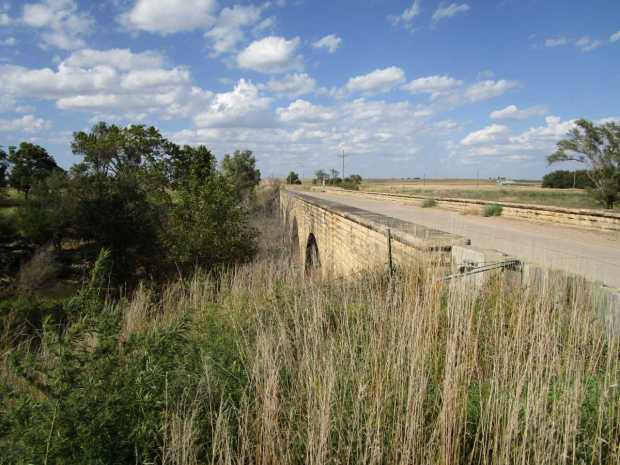In last week’s post we discussed the splendid stone arch bridges we found in Oak Valley Township, Elk County, Kansas. In this post, we discussed how we found several instances where an old c. 1900 stone arch bridge had been widened with a stone structure that was clearly newer, and how on one of these bridges we found the date 1935 set in a layer of hard mortar. As it happens, this pattern fits with observations we made of some of Cowley County’s many stone culverts. Cowley County, Kansas, is famous for its stone bridges, and a comparison with the Oak Valley culverts suggests some clues to the past.
The Similarity
The new portions of the Oak Valley stone arch bridges have an appearance similar to a high percentage of the stone arch culverts we found in Cowley County, Kansas.






Both the newer Oak Valley stone culverts and many of the Cowley stone culverts feature small, uncut stones and, significantly, hard mortar. This hard mortar alone dates these structures as more modern. However, one of the Oak Valley culverts had the date 1935 set in the newer portion, which, due to the consistency in workmanship and width amongst all the widened stone bridges, suggests that all the widening happened in the mid-1930s.
The Depression Road Projects
The date 1935 suggests a Depression road project. This date also fits with the use of hard cement mortar which was simply uncommon a couple of decades earlier. The 1930s saw many Depression-era works projects, and the WPA’s famous stone bridges.

Stone bridges were a natural choice in the Great Depression, as they employed extensive manual labor and relatively little costly material. As such the stone bridge was the natural choice for a works project. However, the Oak Valley and the Cowley County stone culverts do not look like the typical WPA-type works projects; WPA projects were expensive monoliths featuring premium masonry work. The stone culverts in Cowley and Oak Valley hardly fit that WPA-type design. Could they have been built by impoverished townships in order to improve the roads while avoiding costly materials? Alternatively, they could have been a works-project-type structure built at a local level.
Dr. Snyder’s Bridge
Now we come to a well-known stone arch bridge built in Cowley County with a clearly defined date: Dr. Snyder’s Bridge. It is located just outside of Arkansas City on 262nd Road, and spans one of the many small tributaries of the Arkansas River in the area named Spring Creek.

Dr. Snyder’s Bridge features plaques in the concrete rails that give good information about the bridge: It was built in 1935, appears to have been a county bridge, and is built of Silverdale limestone.

Dr. Sndyer’s Bridge features a concrete railing typical of bridges of this vintage. These concrete post-and-rail guard rails appeared in the 1920s and were quite common in the 1930s.

The choice of Silverdale stone for the Dr. Snyder Bridge is an interesting selection. Though the Silverdale quarry (which is still operating, by the way) is relatively close to Arkansas City, this still meant hauling the stone a longer distance than was traditionally used on most of Cowley’s stone arch bridges; the hauling was likely done by rail to at least Arkansas City. Be that as it may, Silverdale limestone was famous for its durability, making it a good choice that was used in all manner of building work. The workmanship of Dr. Snyder’s Bridge is remarkably reminiscent of the rubble-work seen in Cowley’s older bridges. This combined with the lack of a WPA-type plaque seems to confirm that Dr. Snyder’s bridge was built independently of the WPA.
Conclusions
Based on the above, it would seem that the 1930s saw extensive erection of stone bridges, at least in Kansas, that were not related to the WPA. Roads were vital, and the 1930s saw extensive roadwork on all levels. The use of stone could provide a way to greatly improve the roads and employ local labor (thereby helping support the local community) while avoiding expenditure on heavy amounts of concrete or metal. Many ’30s culverts were made entirely of concrete, but to build a stone arch bridge with hard cement mortar would be a way to considerably reduce the amount of concrete needed and hence the material cost, if the stone could be had for the asking, which was likely the case at that time. To build a rough stone arch culvert like the Oak Valley culverts and many of Cowley’s “newer” stone culverts would probably be at once economical and still supportive of impoverished laborers. More evidence is needed to confirm that this type of road scheme was being carried out at local levels, but it seems probable based on the evidence.
